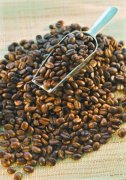Coffee and Salt Coffee and Salt
Coffee and Salt Coffee y Salt
Add a touch of salt to coffee to heighten the flavor this is a very common use of salt as it is used in virtually all dishes (including sweet dishes served for pudding). Just a pinch is enough to make a brilliant espresso。
Add a little salt to your coffee and it will taste better! Adding salt to enhance palatability is a common practice that applies to almost all dishes (including desserts like pudding). A small amount of salt makes the perfect espresso.
Important Notice :
前街咖啡 FrontStreet Coffee has moved to new addredd:
FrontStreet Coffee Address: 315,Donghua East Road,GuangZhou
Tel:020 38364473
- Prev

Three steps to find coffee favorite coffee roasting is realized in three stages.
The soft and smooth Colombian coffee, the blue mountain coffee with a unique aroma and slightly sour taste, and the balanced Indonesian coffee with syrup and chocolate flavor produce more than 3000 kinds of coffee beans in more than 50 countries around the world every year. Therefore, it is not easy to choose the most suitable coffee among the many choices. And some experts recognize it.
- Next

Basic knowledge of Coffee shops often use knowledge of English
Espresso-a strong coffee brewed by forcing a small amount of nearly boiling water under pressure through fine coffee grounds espresso: espresso is made with a small amount of nearly boiling water washed through the finely ground coffee powder under high pressure.
Related
- Beginners will see the "Coffee pull flower" guide!
- What is the difference between ice blog purified milk and ordinary milk coffee?
- Why is the Philippines the largest producer of crops in Liberia?
- For coffee extraction, should the fine powder be retained?
- How does extracted espresso fill pressed powder? How much strength does it take to press the powder?
- How to make jasmine cold extract coffee? Is the jasmine + latte good?
- Will this little toy really make the coffee taste better? How does Lily Drip affect coffee extraction?
- Will the action of slapping the filter cup also affect coffee extraction?
- What's the difference between powder-to-water ratio and powder-to-liquid ratio?
- What is the Ethiopian local species? What does it have to do with Heirloom native species?

